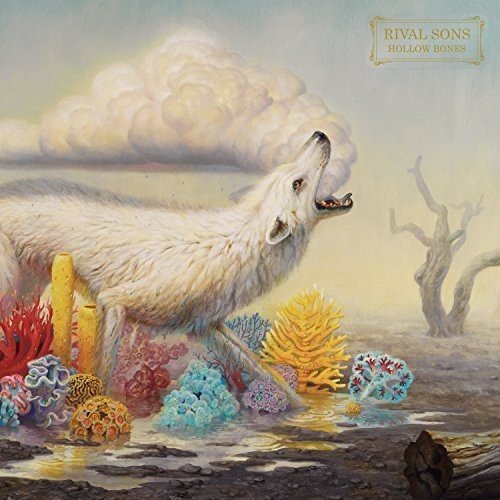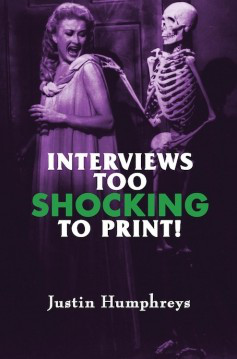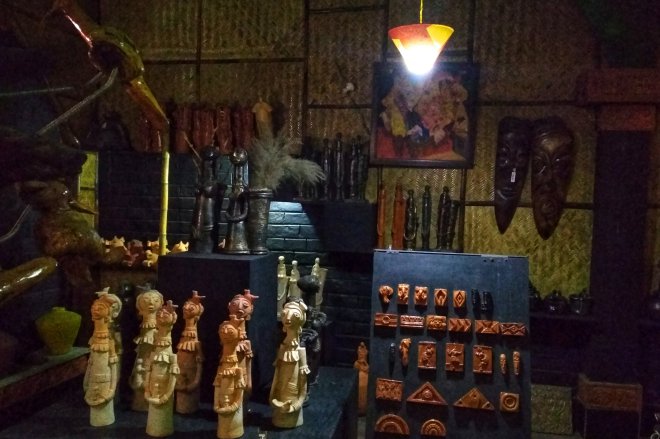What I watched: The July 2, 1948 episode of Howdy Doody, created by E. Roger Muir and starring Bob Smith and Bob Keeshan. The show aired on NBC at 5 pm, and can be seen at the Internet Archive.
What happened: Howdy Doody is a cowboy puppet who just wants to entertain the boys and girls with his friend Cowboy Bob. The ostensible plot of this episode is that Howdy Doody has somehow previously wracked up a debt of 9950 marbles to the mayor [1], Phineas T. Buster (what a name!), and that Buster is demanding that he begin paying them back at a rate of 500 a day. Bob and Buster reach an agreement that they can pay off today’s debt by entertaining the Mayor, and this provides a framework for the variety of segments that make up the show. This was also apparently a serialized plotline, as Buster promises to come back next episode for that day’s installment of 500 marbles, and Buffalo Bob has a blackboard showing various payments of the debt.
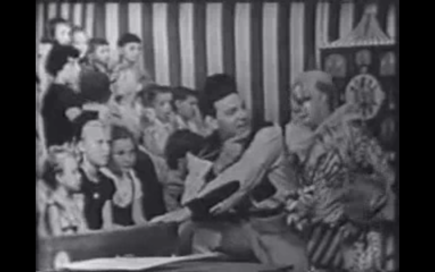 Exclusive footage from I.T.: Chapter 2.
Exclusive footage from I.T.: Chapter 2.
The plot is supposed to be that all of the cast’s entertainments are actually fun and that Buster simply refuses to acknowledge them as worth his payment. To be honest, though, I wouldn’t give 500 marbles for any of this shit. The first segment is Clarabell playing a “trick” on Buffalo Bob. The trick isn’t really anything clever: he winds up his arm like he’s going to punch Bob and tickles him instead. In fact, it’s kind of menacing. I’m not usually someone who freaks out about clowns being scary, but there is definitely something off-putting about the mute Clarabell.
After that, we have a film segment, presumably to break up the monotony of the studio and let Bob have a drink. This is film of a circus in England. Whatever joy or spontaneity there may have been in the circus atmosphere is drained by Buffalo Bob’s narration, as he makes absolutely sure the audience understands everything that’s going on. Of course, that may have been necessary, as the film is so dark it’s often hard to make out. The only part of the circus film that sticks in my mind is the sight of polar bears going down a slide, and that’s mostly because I felt sorry for the bears.
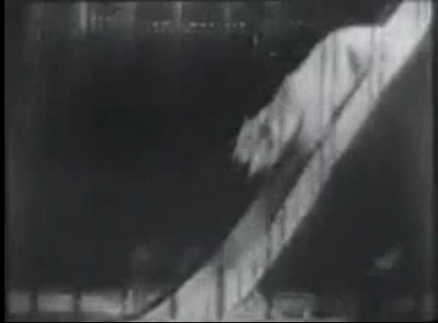 An early part of television’s great history of animal abuse.
An early part of television’s great history of animal abuse.
Following that, Bob attempts some audience participation, getting three Peanut Gallery members to play the ukelele while Howdy sings. Here, we get to watch the interminal process of Buffalo Bob teaching shy kids to play a chord on the ukelele. None of these things are enough to appease Buster, but there’s one thing that can save the day: merchandaise! Howdy brings out a Howdy Doody scarf, with patterns of all the characters on it, and Bob takes great effort demonstrating it to the audience before giving them all one.
What I thought: Every time I’ve heard the name “Howdy Doody”, it’s been shorthand for the idiocy and vapidity of 1950s television. R. Crumb, for instance, described the show as being horrific to its young self with its scary clown and cowboy host who was said to be actually cruel when the cameras weren’t rolling. And if you can freak out Crumb, you must be pretty disturbing. All of these things are more or less true, but it’s also the first scripted show we’ve come across, and as such is something of a welcome relief for me.
Like most early television, Howdy Doody was a radio import. Morning show host Bob Smith created the Howdy Doody character on the WNBC radio station, at the time just a voice. In 1948, he made the leap to television as a puppet, and quickly took over the Puppet Playhouse series, airing three times a week and capturing the hearts of kids across New York and eventually the country. Smith, originally a competitor to Don McNeil, appeared on the show both as the host (“Buffalo Bob”) and the pre-recorded voice of Howdy. The only other regular cast member was Clarabell the Clown, at this time played by Bob Keeshan, who had just started his career and was naturally more of a comedic actor than a clown. The show was produced by E. Roger Muir, a Canadian radio and film producer who had worked on WNBC shows such as Who Said That? and Your Hit Parade. Nobody had experience in television, because there had been no television to get experience in, but they grasped the visual nature of the medium.
If one wants to be charitable towards Howdy Doody, it’s less stupid than it is aimed at very young children. The frequent repetition, songs, and the shortness of each scene would suit such an audience. The audience participation, which Howdy Doody was one of the first to do on television, also seems designed to entertain a hyperactive young audience: after the audience gives a chant of “Howdy Doody” the viewer is expected to do the same thing. However, there seem to be quite a few older children in the studio audience (known as the “Peanut Gallery”, a term that would soon make its way into common parlance), and I can only imagine that they must have been either bored stiff or really hard-up for entertainment.
Likely inspired by radio shows, Howdy Doody was the first show to hit on the value of kids’ love for merchandaise, and absent a prominent sponsor presumably made money by selling things like this scarf and mass-produced Howdy Doody dolls, which would be in stores by Christmas of this year. It’s not all that surprising, then, that this episode ends by turning into a commercial, but it is rather frustrating.
Judging purely from this early episode, Howdy Doody doesn’t quite deserve its awful reputation, but it’s hard to see what made it such a craze among children. A write-in promotion around the time of this episode received 100, 000 responses, which is impressive considering there were less than a million TV sets sold in the United States at this time. Howdy Doody isn’t an immediately lovable character — in this episode he seems shy and even cowardly. Was it just the appeal of the moving images of television combined with a voice that spoke directly to them? The high-pitched voice? The damn clown? I don’t know, but there’s a lot more Howdy Doody in the archive, so like it or not I’ll have plenty more opportunities to figure the show’s appeal out.
What else is on?: Independent stations WPIX and WATV also aired kid-friendly programming with Comics on Parade and Junior Frolic and Films. However, neither of these shows could hold a candle to the damn puppet’s popularity.
Coming up next: Television gets political for the first time as it heads to the presidential conventions.
Advertisements Share this:


